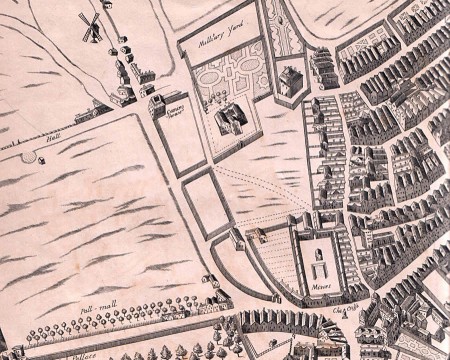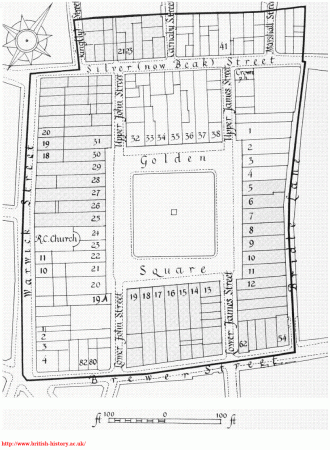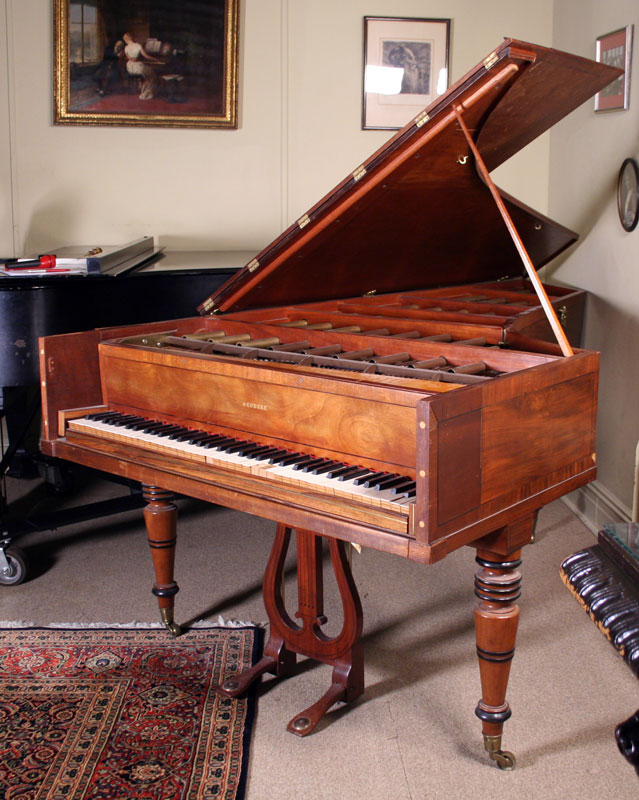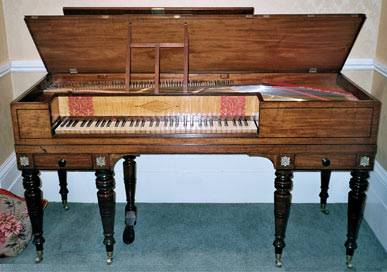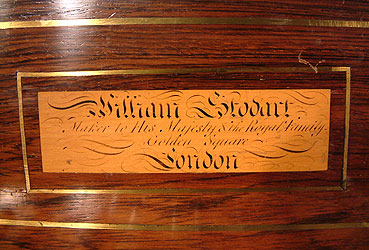Republished and slightly updated from 2008 on the One Golden Square blog.
Absolute Radio is based at One Golden Square, and Virgin Radio has been based at the same address since its launch in 1993. Golden Square is in the heart of Soho, and it actually has some fascinating history including a wonderful musical past in this very building.
Today when you head into London, you may well head towards the West End to shop or visit cinemas or theatres, but of course, London grew out of the City which is east of where we’re based.
There’s a great book called The Ghost Map by Steven Johnson about the last great cholera epidemic in London, in the part of Soho surrounding Golden Square, detailing how the disease was finally understood to be spread by contaminated water.
An early paragraph in the book sets the scene:
In the middle of the Great Plague of 1665, the Earl of Craven purchased a block of land in a semirural area to the west of central London called Soho Field. He built thirty-six small houses “for the reception of poor and miserable objects” suffering from the plague. The rest of the land was used as a mass grave. Each night, the death carts would empty dozens of corpes into the earth. By some estimates, over four thousand plague-infected bodies were buried there in a matter of months. Nearby residents gave it the appropriately macabre-sounding name of “Earl Craven’s pest-field,” or “Craven’s field” for short. For two generations, no one dared erect a foundation in the land for fear of infection. Eventually, the city’s inexorable drive for shelter won out over its fear of disease, and the pesthouse fields became the fashionable district of Golden Square, populated largely by aristocrats and Huguenot immigrants. For another century, the skeletons lay undisturbed beneath the churn of city commerce, until late summer of 1854, when another outbreak came to Golden Square and brought those grims souls back to haunt their final resting grounds once more.
In other words, Golden Square is built over the dead bodies of four thousand people who died during the plague 340 years ago.
The map extract below from 1658 shows the edge of the city of London as it then was. Golden Square is somewhere near the windmill in the top-left hand corner of this image – a field in countryside. The crossroads just below it is now Piccadilly Circus, while the bottom right hand corner shows Charing Cross.
Having been known as Pesthouse Field following the burying of the plague-bodies, it then became known as Gelding Close because horses had been kept thereabouts. It’s also thought possible that there was a tavern called the Gelding.
But as the area was divided into plots, the new residents thought that Gelding Close wasn’t refined enough for them and the name had been changed to Golden Square by the early eighteenth century.
The map below shows how all the plots were divided up, and it’s thought that Sir Christopher Wren might have had a hand in determining how this happened. Buildings on the plot had to be of high quality, made from brick or stone. There had to be “substantial pavements” and “sufficient sewers”, while “noysome and offensive trades” would not be tollerated (In Soho? Never).
As you can see, plot 1, was then, as it still is, in the top right hand corner of the square.
One Golden Square was one of the last sites to be developed with the first building going up in 1705/6.
The first occupant of the building was Lord Maudaunt, but he spent most of his time fighting wars in the Low Countries with the Duke of Marlborough’s armies. Then the 4th Lord Byron – an ancestor of the poet who would be born a hundred or so years later – lived here for a while, before the building and several adjoining ones were bequested to a foundation that provided scholarships to children of the poor. The Bishop of Salisbury also resided here temporarily.
Between 1794 and 1861 a certain William Stodart took up residence – beginning the site’s musical heritage. His firm made harpsichords and pianos; there were a number of makers and manufacturers of the instruments based all around the square including the famous Broadwood firm who had a warehouse at number 9.
Stodart’s father, Robert, patented the first “Grand” piano a few years earlier, while William Stodart patented the “Upright” piano.
Stodart’s piano was described by a competitor as “a new mechanism which combined the utility of a bookcase with the musical use of this odd piece of furniture.”
There’s still a heritage of musical instruments in the square with Foote’s music shop at number 10 [2014 Update – this has now moved to Store Street].
Charles Dickens used Golden Square as the home of Ralph Nickleby, Nicholas’ antagonistic uncle in The Life and Adventures of Nicholas Nickleby which was published in 1838/9. Dickens also reflects the square’s musical links in this description of the square from the novel:
Two or three violins and a wind instrument from the Opera band reside within its precincts. Its boarding-houses are musical, and the notes of pianos and harps float in the evening time round the head of the mournful statue, the guardian genius of a little wilderness of shrubs, in the centre of the square. On a summer’s night, windows are thrown open, and groups of swarthy moustached men are seen by the passer-by, lounging at the casements, and smoking fearfully. Sounds of gruff voices practising vocal music invade the evening’s silence; and the fumes of choice tobacco scent the air. There, snuff and cigars, and German pipes and flutes, and violins and violoncellos, divide the supremacy between them. It is the region of song and smoke. Street bands are on their mettle in Golden Square; and itinerant glee-singers quaver involuntarily as they raise their voices within its boundaries.
By the turn of the twentieth century Golden Square was at the heart of the textile trade with a tweed manufacturer taking residence, Henry Ballentyne & Sons. But in October 1913 the building was badly damaged by fire and was finally demolished in 1927 before being rebuilt as it is today.
[2014 Addition]During the Second World War, the poet, Dylan Thomas, worked on scripts for propaganda films at a company called Strand Films. He sometimes took a turn on the roof of 1 Golden Square looking out for fires during the raids. Although it seemed he had other reasons to be up there.
Adam
For more information, as well as the book mentioned above, you can read about the history of Golden Square at British History online. And thanks should also go to an un-named local historian who wrote into the station many years ago with some background history. And thanks to Lee Price for the photo of the Stodart piano detail.

